In the bunker there was a shout of ‘fire in the hole’, an explosion followed and, then, a lighting up of the sky likened by someone present to a fireworks display. It was January 2010. The setting was the Ballykinkler army base in County Down, and the story told to me was the painting of the picture of loyalist decommissioning - the part of it involving the UDA.
In a handwritten note dated June 2025, the paramilitary ‘brigadier’ Jackie McDonald shares some more detail, including how the Canadian General John de Chastelain had invited him to use the electric saw to cut up a few machine guns. He writes that he did so with mixed feelings, and then offers the standout line: “But the time was right for them to be destroyed.”
Back in 2010, I had reported that on a cold winter’s day, the bullets had been delivered in socks, and that the vehicle used to transport the weapons had got stuck in the snow and needed loyalist muscle to move it.
These many years later, I know that after the breaking of the guns, there was no breaking of bread. McDonald sensed the General was disappointed at what had been brought to him to be put beyond use. de Chastelain asked the question: are these all of the UDA/UFF weapons? And McDonald replied they were all of the weapons they had access to.
Part of the learning of decommissioning, and this relates to all of the sides to the conflict, is that you cannot put beyond use the hell, and the fears and the hurts of those years of war. There will always be guns. Just in case. Believing in Peace is a very long process.
Months earlier in June 2009, I had broken the story of UVF/Red Hand Commando decommissioning before the organisations were ready for it to be told. In pages of notes from that period, logging numerous conversations with sources, I see the pieces of the jigsaw and I am reminded of my doubts.
The story was told to me by loyalists, one of whom spoke of “a bit more running about this week - more than normal. People about who aren’t normally about.” I have another conversation logged with the Red Hand Commando leader, Winston Churchill Rea: “I can’t comment one way or the other. I’m telling you to leave it alone.” Then, from another source, I heard this description of the detail of UVF/Red Hand decommissioning - “a good bit and a big bit”.
On June 17th 2009, I called a senior police officer who commented: “You have some interesting sources. Go with your instincts.” And just before my reports were due to run in the Belfast Telegraph I spoke with an official at the Northern Ireland Office and asked: Could I end up with egg on my face? His breakfast-time response was another confirmation: “If you have, we are both in the same omelette.”
Reporting a conflict and its transition to peace is this making of a jigsaw; putting the pieces together, talking with the widest range of sources - to those on the inside of the many sides. My reports ran on June 18th 2009 and I built in more detail over the days that followed. The UVF and Red Hand confirmed that detail at a news conference on June 27th. I was advised in advance that I would not be welcome, but was told the story of that day by those inside the room, including how plans to decommission were put on hold in March 2009.
2007 endgame statements and the making of a long path to decommissioning
May 3rd 2007 at 12 midnight the UVF and Red Hand Commando will assume a non military, civilianised role.
November 11th 2007 the Ulster Defence Association believes that the war is over.
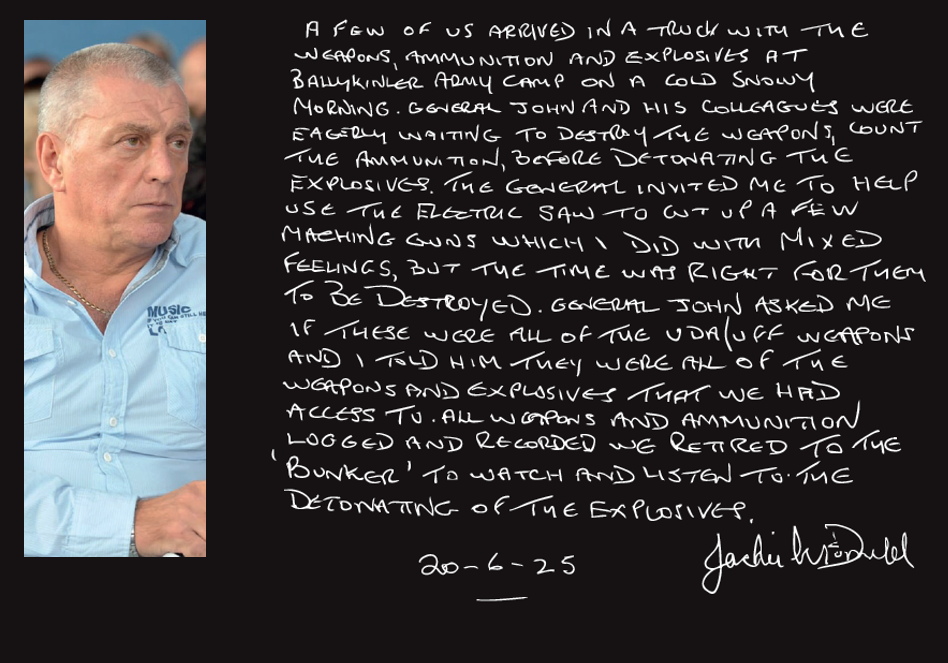 Jackie McDonald UDA Brigadier (pictured) recalls the day he played his part in loyalist decommissioning.
Jackie McDonald UDA Brigadier (pictured) recalls the day he played his part in loyalist decommissioning.
Text transcript
A few of us arrived in a truck with the weapons, ammunition and explosives at Ballykinler Army Camp on a cold, snowy morning. General John and his colleagues were eagerly waiting to destroy the weapons, count the ammunition before detonating the explosives.The general invited me to help use the electric saw to cut up a few machine guns, which I did with mixed feelings, but the time was right for them to be destroyed. General John asked me if these were all of the UDA /UFF weapons and I told him they were all of the weapons and explosives that we had access to. All weapons and ammunition logged and recorded we retired to the bunker to watch and listen to the detonating of the explosives.
20–6-25
Signature: Jackie McDonald
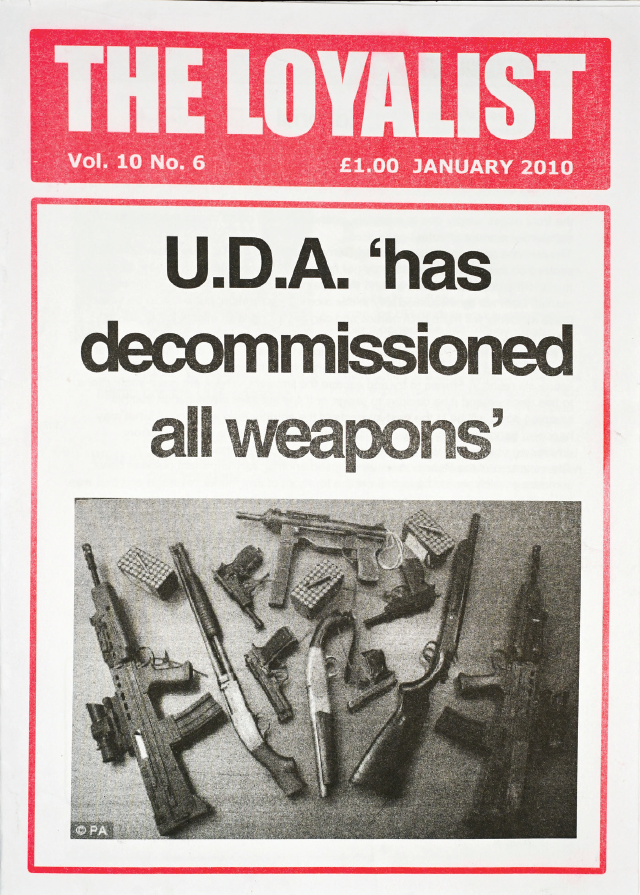 The headline makes a big statement - that all weapons have been decommissioned. But it’s an overtelling of the story. You read in Jackie McDonald’s words the doubting tone when General de Chastelain asks: are these all the weapons held by the UDA/UFF? No organisation decommissioned its entire arsenal. There are still guns - just in case.
The headline makes a big statement - that all weapons have been decommissioned. But it’s an overtelling of the story. You read in Jackie McDonald’s words the doubting tone when General de Chastelain asks: are these all the weapons held by the UDA/UFF? No organisation decommissioned its entire arsenal. There are still guns - just in case.
Download the archive (PDF, 37MB)

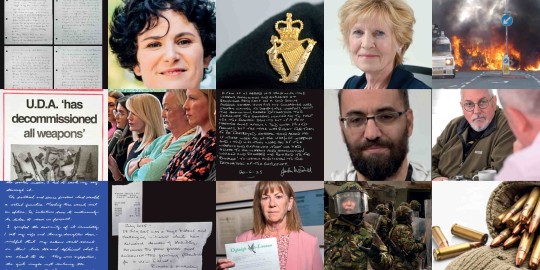
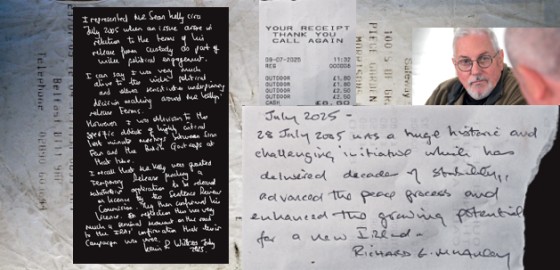
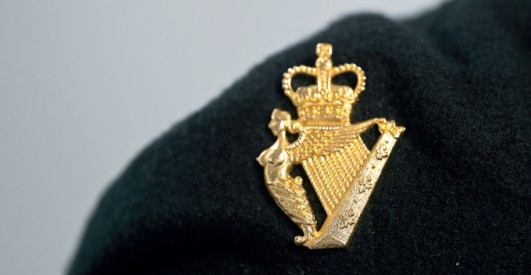
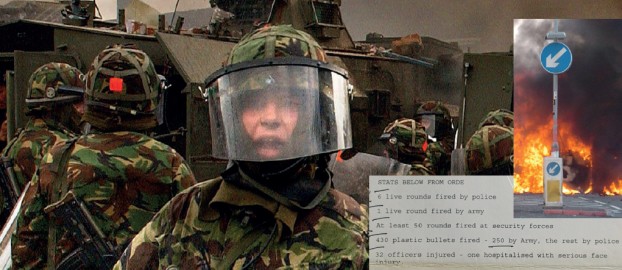


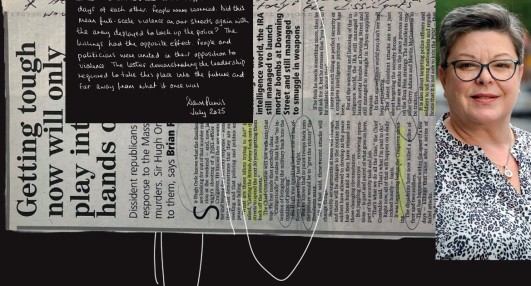
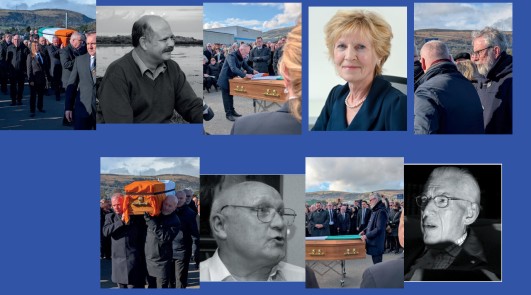


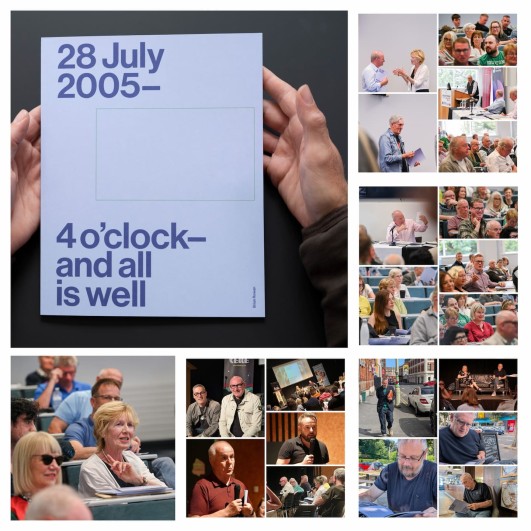

Rate and Review
Rate this article
Review this article
Log into OpenLearn to leave reviews and join in the conversation.
Article reviews